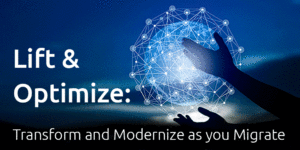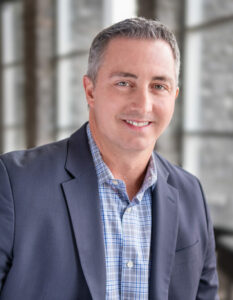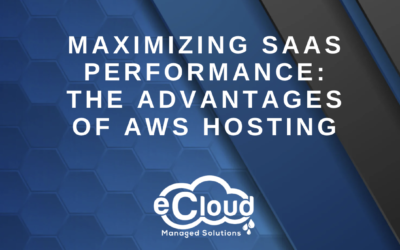November has had its cold spells but are you ready for winter’s chill?
Google Moves to Secure the Cloud From Itself

Source: WIRED
A Vulnerability in Fortinet FortiWeb Could Allow for Arbitrary Code Execution
A vulnerability has been discovered in Fortinet FortiWeb, that could allow for arbitrary code execution. This vulnerability can be exploited when an unauthenticated attacker overwrites the content of the stack by sending crafted HTTP requests with large request parameter values. 
THREAT INTELLIGENCE:
There are currently no reports of this vulnerability being exploited in the wild.
WHO IS AT RISK
Government:
· Large and medium government entities: HIGH
· Small government entities: MEDIUM
Businesses:
· Large and medium business entities: HIGH
· Small business entities: MEDIUM
RECOMMENDED NEXT STEPS:
· Apply appropriate updates by Fortinet to vulnerable systems, immediately after appropriate testing.
· Remind users not to visit un-trusted websites or follow links provided by unknown or un-trusted sources.
· Inform and educate users regarding threats posed by hypertext links contained in emails or attachments, especially from un-trusted sources.
References: FortiGuard, CVE
The 5 Biggest Cloud Computing Trends In 2022
During 2020 and 2021, cloud computing exploded as work went virtual and businesses adapted to the global pandemic by focusing on the delivery of digital services.
It’s likely that we will see the focus shift away from the deployment of cloud tools and platforms in order to improve a specific function (such as shifting to Zoom meetings) towards more holistic strategies centered on enterprise-wide cloud migration.
Augmenting the abilities of remote and hybridized workforces will remain a key trend, but we will see ongoing innovation in cloud and data center infrastructure too. Here’s my overview of some of the key ways this will materialize in 2022.
Cloud continues to grow and evolve with exciting new use cases
According to predictions from Gartner, global spending on cloud services is expected to reach over $482 billion in 2022, up from $313 billion in 2020. Cloud computing infrastructure is the backbone of the delivery pipeline of just about every digital service, from social media and streaming entertainment to connected cars and autonomous internet of things (IoT) infrastructure. New or upcoming ultra-fast networks like 5G and Wi-Fi 6E don’t just mean more data will be streamed from the cloud; they mean new types of data can be streamed. We see this with the explosion in the availability of cloud gaming platforms such as Google’s Stadia and Amazon Luna, which will see increasing levels of investment over the course of 2022.
Sustainability is increasingly a driver of cloud innovation
Every responsible business understands that it has a part to play in tackling the challenges of climate change. In tech, this often centers on reducing the energy usage associated with increasingly powerful computing engines, larger digital storage requirements, and the energy costs of providing 24/7 “always-on” infrastructure services to customers. Most of the tech giants will spend 2022 implementing measures and innovations aimed at helping them achieve their net-zero carbon aspirations. Amazon, the world’s biggest cloud company, is also the world’s biggest buyer of renewable energy and also has 206 of its own sustainable energy projects running worldwide, generating around 8.5GW per year.
Hybrid cloud blurs the distinction between public and private clouds
Since businesses started migrating to the cloud, they have traditionally had two options. They can use easily accessible, pay-as-you-go public cloud solutions or more customized and flexible private cloud solutions. Private cloud (where an organization effectively has its own cloud, and data never has to leave its premises) is also sometimes needed for regulatory and security reasons. Today, companies like Microsoft, Amazon, and IBM (the biggest cloud providers) are expanding their rollout of “hybrid” models that adopt a best-of-both-worlds approach. Data that needs to be quickly and frequently accessed, perhaps by customers, can be kept on public AWS or Azure servers and accessed through tools, applications, and dashboards. More sensitive or mission-critical data can be kept on private servers where access can be monitored, and it can be processed using proprietary applications. Another driving force behind the growth in popularity of hybrid cloud is that many companies are growing past their first forays into cloud computing, and having established the benefits, are looking for additional use cases.
AI in cloud computing
Cloud computing plays a key role in the deliverance of artificial intelligence (AI) services – described by Google CEO Sundar Pichai as “more profound than electricity or fire” in terms of the effect it will have on society. Machine learning platforms require huge processing power and data bandwidth for training and processing data, and cloud datacentres make this available to anyone. Most of the “everyday” AI we see all around us – from Google Search to Instagram filters – lives in the cloud, and technology that routes traffic from data centers to our devices and manages storage infrastructure is built on machine learning. The development and evolution of cloud and AI are inextricably interwoven, and this will only become more true during 2022 and beyond.
The Rise of serverless
Serverless cloud is a relatively new concept that’s gaining traction in the market from providers including Amazon (AWS Lambda), Microsoft (Azure Functions), and IBM Cloud Functions. Sometimes referred to as “functions-as-a-service,” it means organizations aren’t tied into leasing servers or paying for fixed amounts of storage or bandwidth. It promises a truly pay-as-you-go service where the infrastructure scales invisibly as an application requires it. Of course, it isn’t really serverless – the servers are still there – but it adds another layer of abstraction between the user and the platform, meaning the user doesn’t have to get involved with configurations and technicalities.
References: FORBES
WE ARE MIGRATION ACCELERATION PROGRAM (MAP) ELIGIBLE and CERTIFIED
So what does that mean for you? We can get you more money to offset the cost of migrating to AWS and have proven to AWS engineering that we can migrate our clients successfully to and from anywhere! Organizations migrating to AWS require expertise, tools, and alignment of business and IT strategy. Many businesses can accelerate their migration and time to results through partnering with eCloud while reducing migration costs.
Are you migrating to the cloud?
Don’t Just Lift and Shift. Lift and Optimize at Scale and Speed with eCloud.
Lift and Shift has proven a worthy approach for many companies who are looking for a fast, low risk way to move their workloads to the cloud. But what if you had the incremental benefit of Lifting and Optimizing your workloads as part of your journey to any public or private cloud?
The MAP program provides tools that reduce costs and automate and accelerate execution, tailored training approaches and content, expertise from eCloud Managed Solutions and AWS investment. eCloud uses the MAP three-phased framework (Assess, Mobilize, and Migrate and Modernize) to help organizations achieve your migration goals.
Contact us to get started at [email protected]
Get Started
Speak with a cloud consultant today.
eCloud dramatically simplifies backup and recovery by consolidating multiple point products on a single software-defined platform that spans from on-premises, enterprise edge, and to the public cloud. Architected on web-scale principles, eCloud can natively run in the public cloud and offers comprehensive protection against ransomware. We future proof our backup and recovery strategy whether you’re on premise, hybrid, or fully in the public cloud.
Typically, eCloud helps customers reduce their TCO by 50 to 70% with our proven solutions.
Author: Eric Sanders, Managing Partner

________________________________________________________________________




